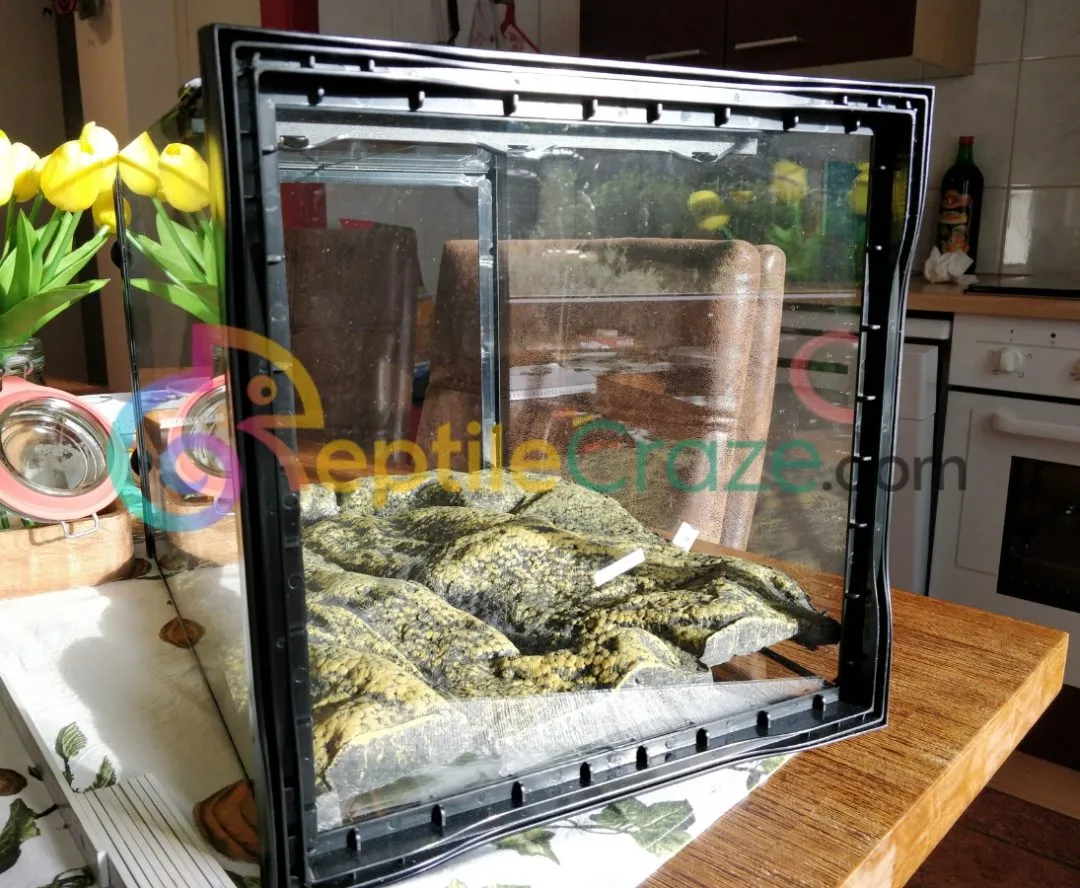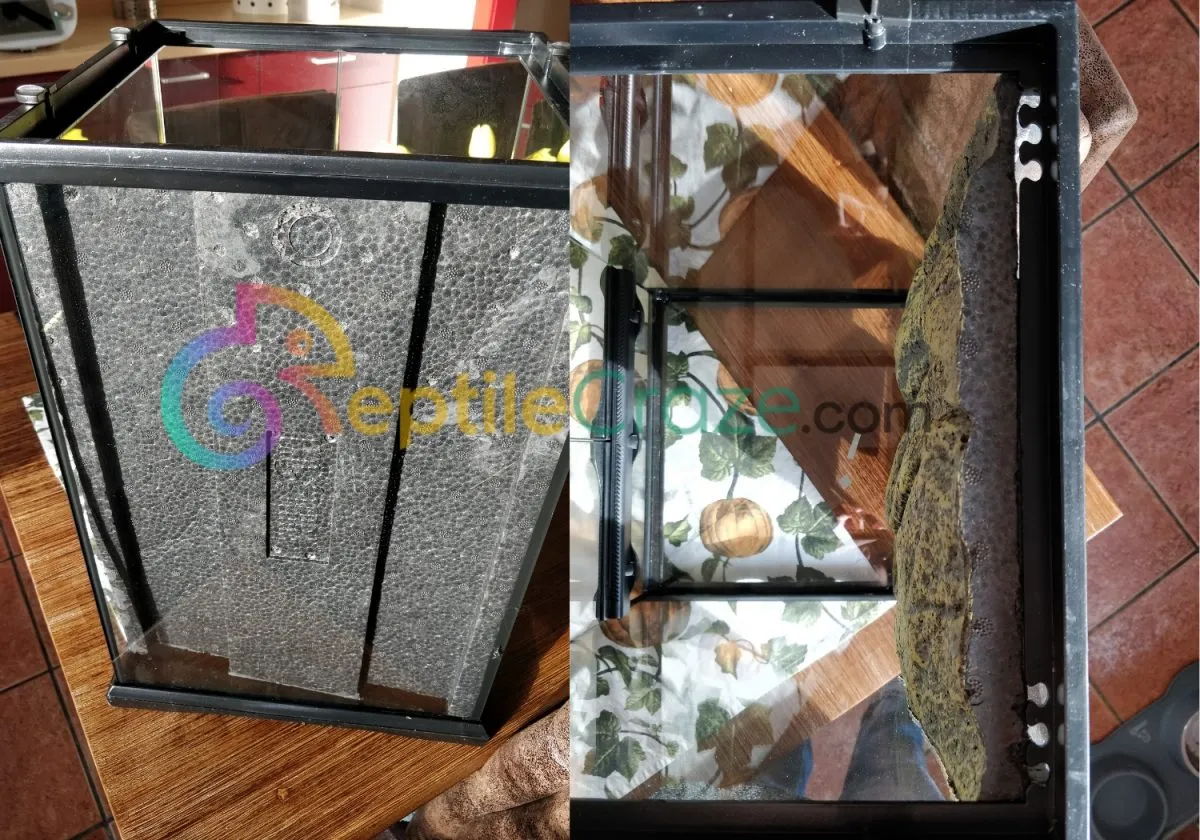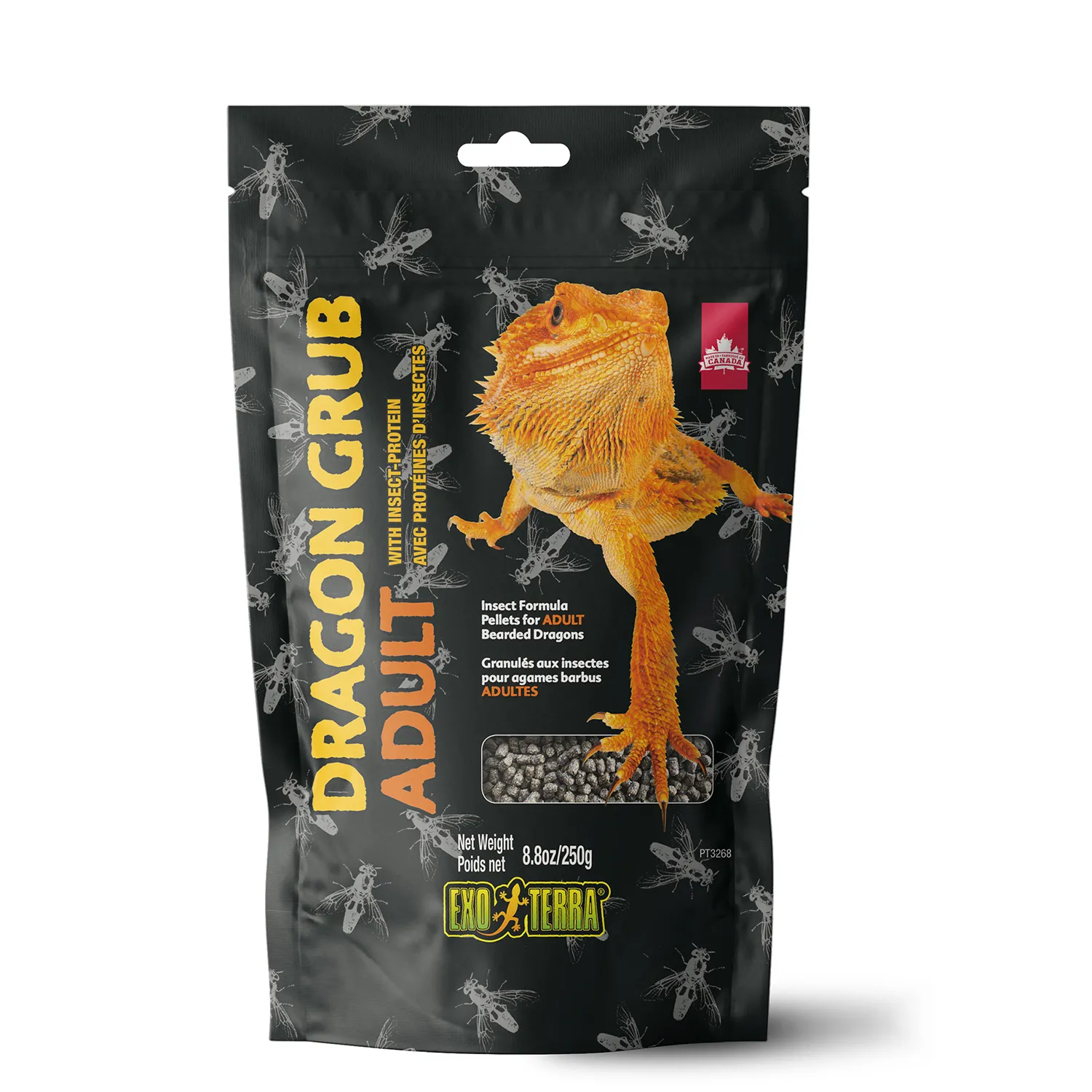Setting up an Exo Terra terrarium for your tarantula is a rewarding experience, providing a natural and enriching environment for your eight-legged friend. This comprehensive guide will walk you through the essential steps to create a perfect habitat, ensuring your tarantula thrives in its new home. From selecting the right size and equipment to decorating and maintaining the terrarium, we’ll cover everything you need to know to become a successful tarantula keeper. With the right knowledge and care, you can create a stunning and functional terrarium that enhances your tarantula’s well-being and your enjoyment of this fascinating creature. Get ready to embark on a journey into the world of tarantula husbandry!
Choosing the Right Exo Terra Terrarium for Your Tarantula
Selecting the appropriate Exo Terra terrarium is the first and most crucial step in providing a comfortable and secure environment for your tarantula. Several factors should be considered, including the species of tarantula, its size, and its specific needs. Exo Terra terrariums come in various sizes and designs, offering flexibility in creating a suitable habitat for different types of tarantulas, from small arboreal species to large terrestrial ones. Consider the adult size of your tarantula when choosing the enclosure, ensuring there is enough space for it to move, molt, and hunt comfortably. The design of the terrarium, including ventilation, door access, and material, will also impact the overall success of your setup.
Size Matters Determining the Best Dimensions
The dimensions of the Exo Terra terrarium are critical. For terrestrial tarantulas, a larger floor space is more important than height. A general guideline is to provide an enclosure that is at least twice the tarantula’s leg span in width and length. For arboreal species, a taller enclosure is more suitable, allowing them to climb and create web structures. Avoid oversized enclosures for smaller tarantulas, as they may feel insecure and have difficulty finding food. Conversely, an enclosure that is too small will restrict movement and could lead to stress. Always consider the adult size of your tarantula and choose an enclosure that will accommodate its full growth. The right size supports your tarantula’s well-being and allows you to create a more engaging and visually appealing habitat.
Ventilation Needs for a Healthy Habitat

Proper ventilation is paramount in a tarantula terrarium to prevent the buildup of humidity, which can lead to mold and bacterial growth, ultimately endangering your tarantula’s health. Exo Terra terrariums are designed with ventilation features, but their placement and effectiveness can vary. Ensure that there are sufficient vents to allow for airflow. Stagnant air can create an unhealthy environment, while good ventilation helps regulate humidity levels and reduce the risk of respiratory issues. Regularly inspect the ventilation system for any blockages and clean the vents as needed. In some cases, you may need to adjust ventilation by adding additional vents or modifying the existing ones to ensure optimal airflow for your tarantula’s specific needs. This careful approach is critical to providing a healthy and safe habitat.
Essential Equipment for an Exo Terra Terrarium
Equipping your Exo Terra terrarium with the right materials is crucial for creating a thriving habitat. This includes selecting appropriate substrate, providing water and humidity, and maintaining optimal temperature and lighting conditions. The following are the key components necessary to set up a functional and comfortable environment for your tarantula. Investing in high-quality equipment will ensure the long-term health and well-being of your tarantula. Careful consideration of each element is necessary to provide a habitat that mimics the tarantula’s natural environment as closely as possible. Proper equipment also helps with managing and cleaning the terrarium and ultimately, enhances your overall experience as a tarantula keeper.
Substrate Selection Creating a Natural Environment
The substrate forms the foundation of your tarantula’s habitat and plays a vital role in its overall well-being. A good substrate should absorb moisture, allow the tarantula to burrow if it’s a terrestrial species, and maintain the appropriate humidity levels. The choice of substrate will depend on the type of tarantula you have. Suitable options include coco fiber, peat moss, or a mixture of both. Avoid substrates that are dusty, toxic, or easily mold. The substrate layer should be deep enough to allow for burrowing behavior, and it should be replaced regularly to prevent the buildup of waste and bacteria. Proper substrate selection is key to creating a healthy and engaging environment for your tarantula and contributes to the overall aesthetic of the terrarium.
Importance of Substrate Type for Tarantulas

The substrate type significantly impacts your tarantula’s comfort and health. Different species have different requirements. For example, burrowing tarantulas need a substrate that allows them to dig deep tunnels, which provides shelter and security. Arboreal species may benefit from a substrate that helps maintain higher humidity levels. Coco fiber is a popular choice, as it retains moisture well and is safe for tarantulas. Peat moss can also be used, but ensure it’s free of fertilizers and chemicals. Avoid substrates like sand or gravel, as they don’t hold humidity effectively and can be abrasive. The appropriate substrate type will contribute to your tarantula’s ability to thrive and behave naturally in a safe environment.
Water and Humidity Proper Hydration for Your Tarantula
Maintaining adequate humidity is essential for tarantula health, and proper hydration is critical for molting and overall well-being. Provide a shallow water dish with fresh water at all times. The dish should be small enough to prevent the tarantula from drowning but accessible for drinking. Use a non-toxic dish and clean it regularly. To increase humidity, you can mist the enclosure lightly with a spray bottle, but avoid over-misting, which can lead to mold growth. Monitoring the humidity levels with a hygrometer is recommended, and adjust the misting frequency accordingly. Adequate humidity, in combination with a consistent water supply, contributes to your tarantula’s hydration needs.
Placement of Water Dishes and Misters
The placement of the water dish and the use of a mister are essential. Place the water dish in a stable location, away from heat sources and where the tarantula can easily access it. Ensure the dish is not too deep, as young tarantulas may be prone to drowning. When misting, avoid spraying directly onto the tarantula, which can cause stress. Instead, lightly mist the sides of the enclosure or the substrate to increase humidity. Monitor the enclosure’s humidity levels, especially after misting, and adjust the frequency as needed to maintain the appropriate humidity levels. This meticulous care ensures that your tarantula remains hydrated and healthy, avoiding risks of both dehydration and excess moisture.
Heating and Lighting Maintaining Optimal Conditions

Tarantulas are ectothermic, meaning they rely on external sources to regulate their body temperature. Maintaining the right temperature is vital. The ideal temperature range will vary depending on the species. Use a heat source such as a heat mat or a ceramic heat emitter, but never use a heat source directly inside the terrarium, as it can burn your tarantula. Monitor the temperature with a thermometer placed at both the warm and cool sides of the enclosure. Providing a temperature gradient allows the tarantula to choose its preferred temperature zone. Additionally, consider the need for lighting, as some species might benefit from a natural day/night cycle for proper activity levels. These environmental controls are essential.
Heat Sources and Their Safe Use
Choosing the right heat source and ensuring its safe use are critical for your tarantula’s well-being. Heat mats placed on the side or underneath the enclosure are a common choice, but they must be controlled with a thermostat to prevent overheating. Ceramic heat emitters provide a steady source of heat and are also suitable, but they should be used with a protective cage to prevent accidental contact. Never use incandescent light bulbs as the primary heat source, as they can dry out the enclosure. Always monitor the temperature with a reliable thermometer and avoid placing heat sources directly against the glass of the terrarium, as this can create hotspots and potentially cause burns or damage. A regulated and controlled heating system is essential for your tarantula’s health.
Lighting Considerations for Day and Night Cycles
While tarantulas do not require intense lighting, a natural day/night cycle can be beneficial for their activity patterns and overall well-being. If you choose to use lighting, opt for a low-wattage LED bulb or a UVB bulb designed for reptiles. Position the light source to provide a gentle illumination without creating excessive heat. Ensure that the light cycle mimics the natural daylight hours in your region. A timer can automate the lighting schedule, ensuring consistency and convenience. This is beneficial for both the tarantula and the owner. Be cautious not to over-light the enclosure. Providing a day/night cycle is one of the important steps toward creating a natural and enriched habitat.
Decorating the Exo Terra Terrarium

Decorating the Exo Terra terrarium is essential for providing enrichment and security for your tarantula. The decorations should mimic the tarantula’s natural habitat, providing opportunities for climbing, hiding, and exploring. This not only enhances the visual appeal of the terrarium but also creates a stimulating environment for your tarantula, reducing stress and promoting natural behaviors. Safe and appropriate decorations are essential to create a comfortable habitat for your tarantula. Consider your tarantula’s species-specific needs when choosing decorations and remember that simplicity is often the best approach.
Adding Hides and Climbing Structures
Hides are crucial for tarantulas. They provide a sense of security, allowing them to retreat and feel safe from potential threats. Provide at least one hide, such as a piece of cork bark, a hollow log, or a commercially available hide. Make sure the hide is appropriately sized and allows the tarantula to fully conceal itself. Climbing structures, such as branches or artificial plants, can also enrich the habitat, particularly for arboreal species. Ensure that any climbing structures are secure and free from sharp edges. These additions will allow your tarantula to engage in natural behaviors and provide visual interest.
Choosing Appropriate Plants
Plants can enhance the aesthetics and functionality of your tarantula’s habitat. Live plants can help maintain humidity levels and provide a more natural environment, while artificial plants are easier to maintain. If you choose live plants, select species that are non-toxic to tarantulas and are suitable for the enclosure’s humidity and lighting conditions. Spider plants, pothos, and snake plants are popular choices. Ensure that the plants are thoroughly cleaned before introducing them to the terrarium. Artificial plants should be made of non-toxic materials and should be regularly cleaned. Both live and artificial plants can contribute to a visually appealing habitat, adding to your enjoyment.
Live vs Artificial Plants and their Pros and Cons

Consider the pros and cons of live versus artificial plants when decorating your terrarium. Live plants can contribute to humidity and enhance the natural appearance of the enclosure, but they require more maintenance, including watering and appropriate lighting. They can also be susceptible to pests. Artificial plants are easier to maintain and do not require specific lighting or watering, but they do not provide the same environmental benefits as live plants. Choose the option that best suits your capabilities and the needs of your tarantula. The best option will allow for a harmonious environment for your tarantula.
Feeding and Maintaining Your Tarantula’s Habitat
Feeding and maintaining your tarantula’s habitat are ongoing processes that ensure your tarantula’s health and happiness. These elements include providing a suitable diet, maintaining cleanliness, and monitoring the environment. Regular care and attention are essential for preventing problems and creating a thriving environment. Careful maintenance is important to maintaining the health and safety of both the tarantula and its habitat. Regular inspection and actions will contribute to a long and fulfilling life for your tarantula.
Feeding Schedule and Prey Selection
Feeding frequency will depend on your tarantula’s age, species, and growth rate. Juvenile tarantulas typically need to be fed more frequently than adults. Offer a variety of live insects such as crickets, mealworms, dubia roaches, or appropriately sized prey for the tarantula. Always ensure the prey is smaller than the tarantula’s body size. Remove any uneaten prey after 24 hours to prevent them from stressing the tarantula or causing harm. Avoid feeding your tarantula directly from your hands, as this can lead to accidental bites. Varying the diet will provide a balanced diet and stimulate your tarantula’s natural hunting instincts.
Maintaining the Exo Terra Terrarium

Regular maintenance is necessary for a healthy and hygienic environment. This includes regular cleaning, waste removal, and monitoring of humidity and temperature levels. Consistent care will prevent the buildup of bacteria, mold, and other potential hazards. Maintenance should be performed on a schedule. Routine checks will identify potential issues. A well-maintained terrarium will not only keep your tarantula healthy but will also enhance your enjoyment of the hobby.
Cleaning and Waste Removal
Cleaning the terrarium involves removing any uneaten food, shed exoskeletons, and fecal matter. Spot clean the substrate regularly, removing any waste you observe. Deep clean the enclosure periodically, replacing the substrate entirely and sanitizing the enclosure. Always wear gloves and wash your hands thoroughly after cleaning the terrarium. Avoid using harsh chemicals or cleaners, as they can be toxic to tarantulas. Consistent cleaning will keep the environment free from dangerous pathogens and provide a safe environment for your tarantula.
Monitoring Humidity and Temperature Levels
Regularly monitor the humidity and temperature levels inside the terrarium using a hygrometer and a thermometer. Ensure that the conditions are within the acceptable range for your specific tarantula species. Make adjustments to the heating and ventilation as necessary to maintain optimal conditions. Document the readings to track any fluctuations and to ensure that the environmental conditions are consistently suitable. Proper monitoring allows you to take immediate action if problems occur. Creating a sustainable habitat is an important step for your tarantula’s long-term health.
Troubleshooting Common Issues
Even with the best care, you may encounter some common issues when keeping a tarantula. Understanding and addressing these problems quickly can prevent more serious health complications. By recognizing and responding to these signs, you can ensure that your tarantula remains happy and healthy. The following are the key issues to watch out for and some solutions that can help resolve these problems.
Dealing with Mold and Pests
Mold and pests can be detrimental to your tarantula’s health. Mold growth is often a sign of excessive humidity and poor ventilation. To combat mold, improve ventilation, reduce humidity, and remove any moldy substrate. Pests like mites and fruit flies can also infest the terrarium. If you spot pests, remove the contaminated substrate and thoroughly clean the enclosure. Consider using insecticidal treatments specifically designed for terrariums. Inspect any new substrate, plants, or decorations to prevent pest introductions. Addressing these issues promptly helps to provide a safe environment.
Addressing Molting Problems
Molting is a natural process, but problems can sometimes arise. A tarantula may have difficulty molting, or it might get stuck in its old exoskeleton. Ensure that the humidity levels are adequate, as dry conditions can complicate the molting process. Avoid disturbing your tarantula during molting. If the tarantula struggles for an extended period, provide additional humidity by misting the enclosure and consult with an experienced tarantula keeper. Patience and understanding are essential during this phase of the tarantula’s life. These measures will promote a healthy and successful molting process.
In conclusion, setting up an Exo Terra terrarium for your tarantula requires careful planning, research, and ongoing maintenance. By following these guidelines, you can provide a safe, stimulating, and enriching environment for your tarantula, allowing it to thrive and display its natural behaviors. Remember to research the specific needs of your tarantula species and to adapt the setup accordingly. With dedication and proper care, you can enjoy the unique and fascinating world of tarantulas for many years to come. Happy keeping!
